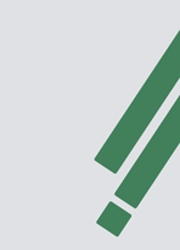Summary
This seventh national report presents information from 278 organisations across Australia, funded by the Australian Government to provide one or more of the following health services to Aboriginal and Torres Strait Islander people: primary health care, maternal and child health care, social and emotional wellbeing services, and substance-use services. These organisations participated in the 2014–15 Online Services Report data collection. Information is presented on the characteristics of these organisations, the health services and activities provided to clients and staffing levels. Other information presented includes client numbers, client contacts and episodes of care, and service gaps and challenges.
Primary health client contacts increased
- In 2014–15, 203 of the organisations (73%) were funded to provide primary health-care services and many of these were Aboriginal Community Controlled Health Organisations (138 or 68%).
- These organisations employed 7,359 full-time equivalent staff and just over half (53%) were Indigenous, a similar proportion to 2013–14 (53%). The workforce was made up of 4,454 health staff (61%) and 2,905 other staff (39%). Nurses and midwives were the most common type of health worker, representing 15% of employed staff. This was followed by Aboriginal health workers (11%) and doctors (6%). However, the relative proportions of these varied by remoteness area, with more nurses and midwives being employed in Very remote areas (39%) and more Aboriginal health workers in Outer regional areas (31%).
- Health staff provided primary health-care services to around 434,600 clients through 5.0 million client contacts. Since 2013–14, client contacts increased by 9%. Although the number of staff per 1,000 clients was similar to 2013–14 (18 per 1,000 clients), the number of contacts per client showed a small increase and continued an upward trend in average contacts per client overtime, which has gone from 7.7 in 2008–09 to 11.6 in 2014–15.
An average of nearly 5 antenatal visits per woman
In 2014–15, 220 of the organisations (79%) provided maternal and child health services, either through primary health or New Directions funding. Around 34,100 antenatal visits were reported for 7,400 Indigenous women, an average of 4.6 visits per woman. Around 22,100 child health checks were conducted for Indigenous children aged 0–4 years.
More social and emotional wellbeing counsellors
In 2014–15, 97 of the organisations (35%) were funded to provide social and emotional wellbeing services. They employed 221 counsellors, an increase of 17% compared with 2013–14. Around 60% of counsellors were Indigenous, a similar proportion to 2013–14 (62%). Services were provided to around 21,100 clients through 100,200 client contacts.
Amphetamines seen as an important substance-use issue
In 2014–15, 67 of the organisations (24%) were funded to provide substance-use services. They saw around 25,200 clients through 151,000 episodes of care. Most episodes of care (89%) were for non-residential or after-care services. The proportion of these organisations that reported amphetamines as one of their most important issues in terms of staff time and organisational resources increased from 45% in 2013–14 to 70% in 2014–15.



